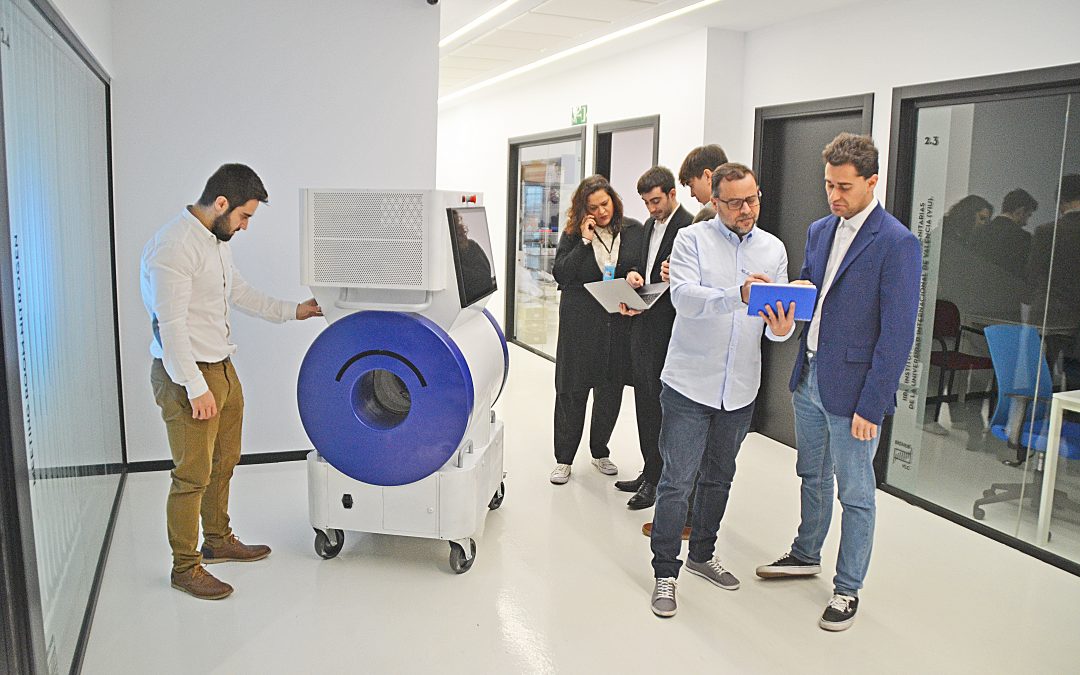The scanner is the first that can be used in racing circuit hospitals, where they have X-ray equipment, but not magnetic resonance imaging.
Last September, a research group from the Institute of Instrumentation for Molecular Imaging (i3M), a joint center of the Higher Council for Scientific Research (CSIC) and the Polytechnic University of Valencia (UPV), presented the first portable magnetic resonance machine on the market, developed together with the spin-off PhysioMRI Tech . It is a low-cost, low-consumption device, spending half as much as a microwave oven, which allows images of arms and legs to be taken in a very short time and with high diagnostic quality.
Two months after its presentation, the portable MRI device will be used during the Valencian Community GP of motorcycling, which will be held starting tomorrow, Saturday and Sunday at the Ricardo Tormo circuit in Cheste .
The machine has been installed in the main operating room of the circuit’s Medical Services room, under the supervision of Dr. Vicente Vila, chief medical officer of the Circuit, and Dr. Ángel Charte, MotoGP medical director. During the competition weekend, it will be available to the fastest pilots on the planet to, if needed, offer a quick and effective diagnosis, proving to be a tool that can radically change trauma diagnoses, the most frequent in the world. of sport.
In the words of Joseba Alonso, CSIC researcher who leads the project, “this is a key step in the evaluation of the versatility of this technology, since in this way it will be possible to quantify the impact it can have on a first-class sporting event.” level”.
“In these first tests, we hope that our system can be used to complement the clinical diagnosis of the Circuit’s medical team, allowing the taking of images of drivers, family members, engineers and team personnel, Circuit and organization workers, marshals. track, etc. Our scanner is the first that can be used in hospitals on racing circuits, where there is usually some X-ray device, but never magnetic resonance imaging,” Alonso highlights. “X-rays offer two-dimensional projections in which hard tissues, such as bones or tendons, stand out. On the contrary, MRI generates three-dimensional reconstructions in which soft tissues, such as muscles and organs, are also visualized.”
“At PhysioMRI Tech we are excited that the first major sporting event using our machine will be the MotoGP Grand Prix, a world-class sporting event,” says Jon Fatelevich, co-founder of the company.
About portable MRI
The device developed at the Valencian research center drastically reduces the cost of magnetic resonance imaging devices, going from one million euros to around 50,000. In addition, it is much lighter, only 250 kilos compared to thousands of current devices. Cost and weight are reduced when going from a superconducting magnet, like those used in large particle physics experiments, to one based on an array of about 5,000 small permanent magnets like those found in refrigerators. “The counterpart is that this lowers the intensity of the magnetic field, and, therefore, the maximum resolution of the image,” Alonso acknowledges. “However, there are many applications where all the resolution provided by very expensive hospital machines is not necessary, and at the same time it opens up a whole new range of possibilities.”
Reducing the magnetic field allows the system developed by i3M to be compatible with situations in which magnetic resonance imaging was automatically ruled out, such as use in the operating room or in the case of patients with pacemakers or tattoos.
In addition, lowering the weight of the device allows the system to be mounted on a cart and have a portable scanner. “Its portability has allowed it to travel comfortably to the circuit, proving itself as a tool that can become another passenger in the great motorcycling circus or any other event with similar characteristics such as the Tour de France or the Formula 1 World Championship.” , highlights Joseba Alonso. In addition, it could also be used in patients’ homes, residences for the elderly or people with reduced mobility, outpatient clinics and small clinics, intensive care areas, emergencies, operating rooms and medical vehicles or field hospitals.
BACK TO NEWS

Recent Comments